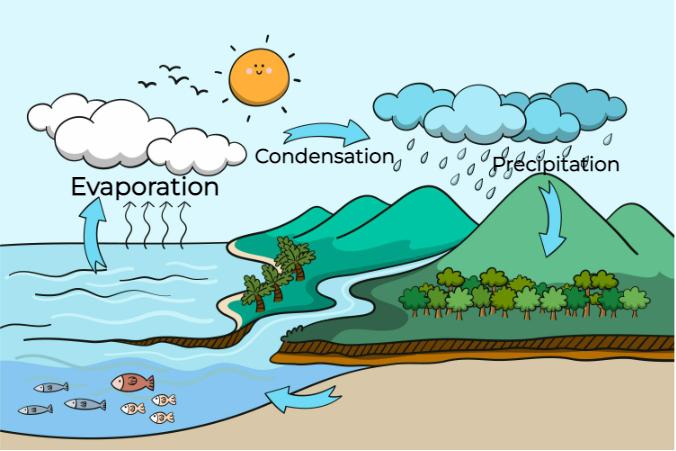Evaporation and boiling are two common physical processes that involve the conversion of a liquid into a gas. While they may seem similar, there are distinct differences between evaporation and boiling. This article aims to explore and explain these differences, shedding light on the unique characteristics of each process.
Definition:
At a temperature lower than its boiling point, evaporation is the process by which a liquid transforms into a gas or vapour state. It occurs when the molecules on the liquid’s surface gain enough energy to break free and enter the gaseous phase. Boiling, on the other hand, is the rapid conversion of a liquid into a gas at its boiling point. It requires the entire liquid to reach a specific temperature where vapor pressure equals atmospheric pressure.
Temperature:
One fundamental difference between evaporation and boiling lies in the temperature at which they occur. Evaporation can happen at any temperature below the boiling point of a liquid. For instance, a puddle drying up on a sunny day is an example of evaporation. In contrast, boiling occurs at the boiling point, which is a specific temperature unique to each liquid. Water boils at 100 degrees Celsius (212 degrees Fahrenheit) at sea level.
Energy Transfer:
During evaporation, heat energy from the surroundings is absorbed by the liquid molecules, increasing their kinetic energy. This energy is then used to break the intermolecular bonds, allowing the liquid molecules to escape into the air as vapor. Evaporation is a cooling process as it removes heat from the surroundings. Boiling, on the other hand, requires a continuous input of heat to maintain the temperature at the boiling point. The added heat provides the energy needed to overcome the intermolecular forces and transform the liquid into vapor.
Bubbles Formation:
Another notable difference between evaporation and boiling is the formation of bubbles. In the case of evaporation, bubbles do not form since the process occurs only at the liquid’s surface. As individual molecules gain sufficient energy, they break free and enter the gas phase without causing visible disturbances. Boiling, however, involves the formation of bubbles within the entire volume of the liquid. These bubbles consist of vapor and are created when the liquid’s internal temperature reaches the boiling point.
Rate of Process:
Evaporation and boiling also differ in terms of their rates. Evaporation is a relatively slow process, occurring gradually as energy is transferred to the liquid’s surface. It takes place at different rates depending on factors such as temperature, surface area, humidity, and airflow. In contrast, boiling is a rapid process that occurs uniformly throughout the liquid once the boiling point is reached. The speed of boiling is influenced by factors such as heat input, atmospheric pressure, and the properties of the liquid itself.
Conditions Required:
Evaporation can occur under various conditions, including at room temperature, low humidity, and even in a vacuum. It is influenced by factors such as temperature, surface area, air movement, and humidity. Boiling, on the other hand, requires specific conditions to take place. It necessitates the liquid to be heated to its boiling point and the presence of atmospheric pressure. Any decrease in pressure would lower the boiling point, such as at higher altitudes where water boils at lower temperatures.
Conclusion:
In summary, while evaporation and boiling both involve the conversion of a liquid into a gas, they differ in several key aspects. Evaporation occurs below the boiling point and is a slower, surface-based process, driven by the transfer of heat energy. Boiling, on the other hand, happens at the boiling point and is a more rapid process that involves the formation of bubbles throughout the liquid. Understanding these distinctions is crucial in various fields, including physics, chemistry, and everyday life, as they help us comprehend the behavior of liquids and their transformations into gas states.

